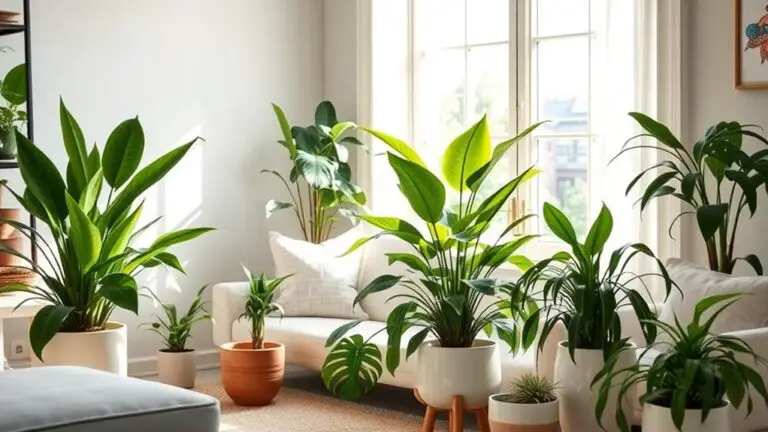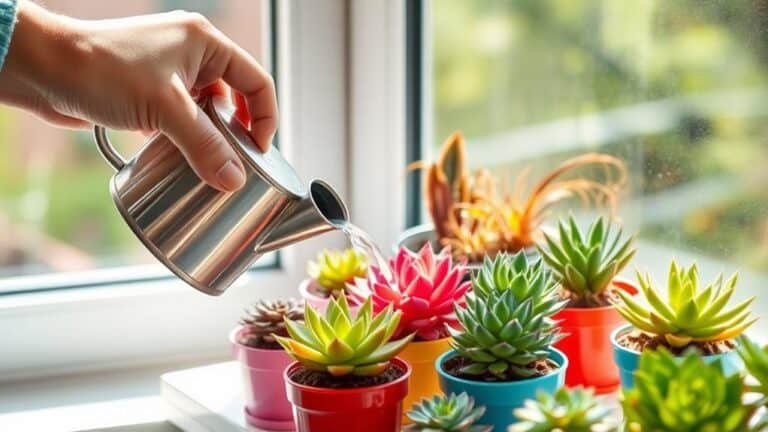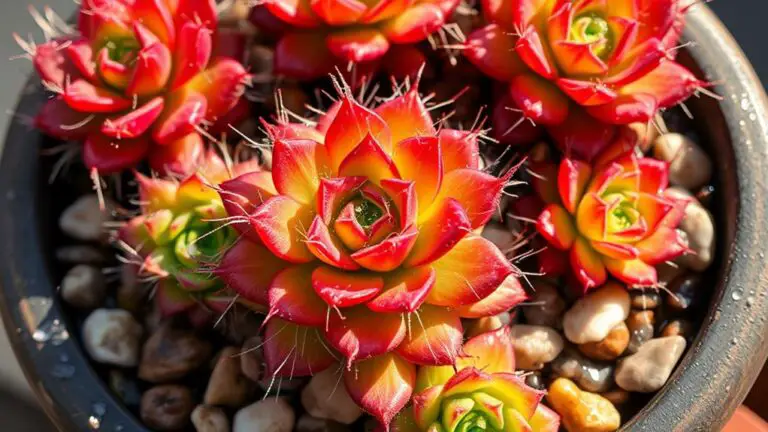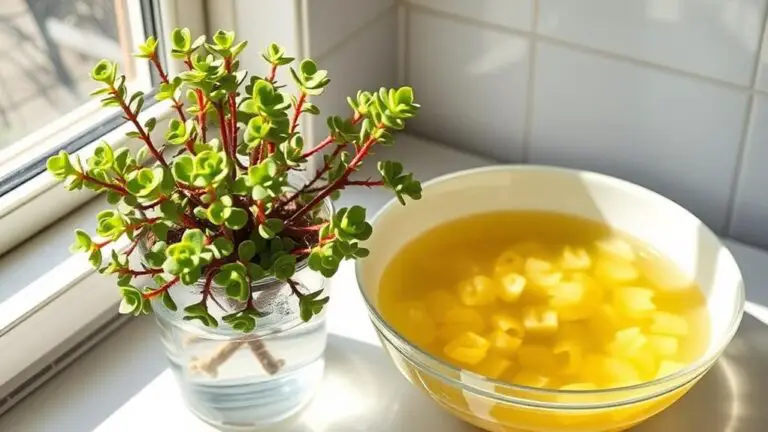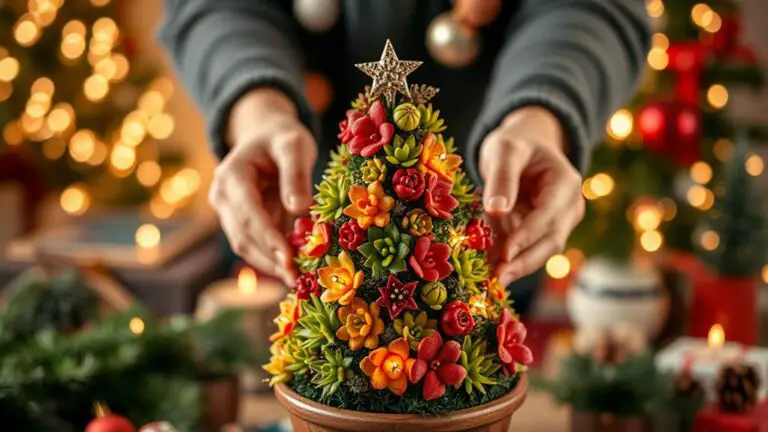How to Deal With Transplant Shock – a Step-By-Step Guide
When you transplant a plant, it often experiences transplant shock, a stress response that can hinder its growth. Understanding how to manage this process is essential for your plant's recovery and long-term health. You'll need to start by preparing the new site properly and choosing the best season for the move. But that's just the beginning. Recognizing symptoms like wilting leaves and knowing how to respond can make all the difference. Are you ready to learn the key steps to guarantee your plant thrives after a transplant? Let's explore how to minimize and manage transplant shock effectively.
Understanding Transplant Shock
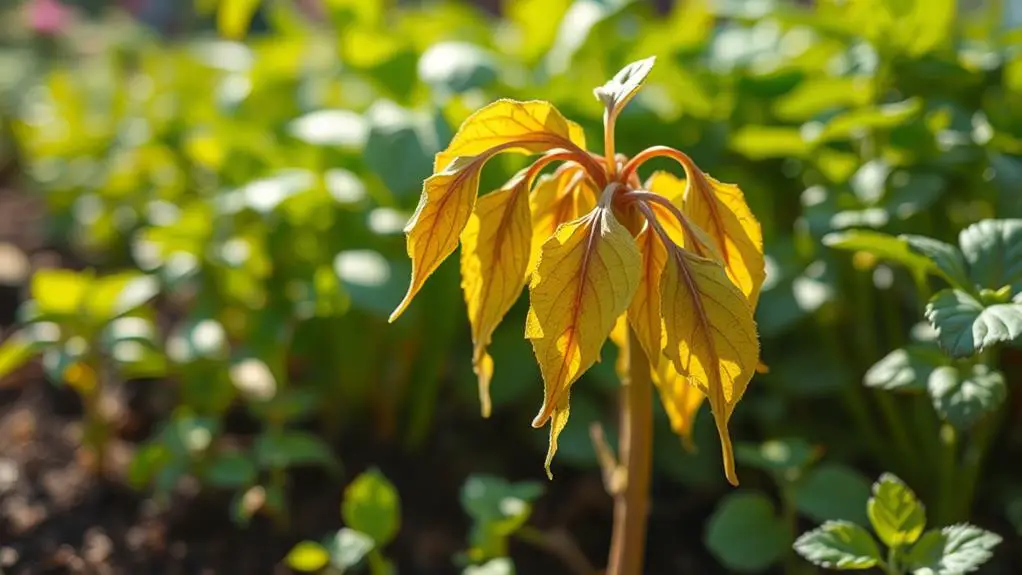
Transplant shock often occurs when plants experience stress after being moved to a new location, primarily due to root disturbance and environmental changes.
When you transplant a plant, its root system is often disrupted, making it difficult for the plant to take up water and nutrients efficiently. As a result, the plant may struggle to adjust to its new environment.
Understanding transplant shock symptoms is essential for helping your plant recover. You might notice wilting leaves, leaf drop, stunted growth, and increased vulnerability to diseases and pests.
These symptoms can be alarming, but they're usually a sign that the plant is adjusting to its new home.
One of the most important factors in managing transplant shock is maintaining proper soil moisture. Too much or too little water can exacerbate the stress on the plant.
Keep the soil consistently moist, but not soggy, to support the root system as it establishes itself.
Young plants are generally more susceptible to transplant shock than mature ones.
The timing of your transplant can also make a difference; spring and fall are often the best times to move plants.
With the right care, your plants can bounce back and thrive in their new location.
Recognizing Symptoms

Recognizing transplant shock starts with spotting common stress indicators like wilting leaves and premature fall color, which can look like drought stress even when you're watering enough.
Keep an eye out for visual damage signs such as branch dieback and leaf drop, as these are key indicators.
Early detection tips include monitoring for yellowing leaves and stunted growth, especially in young plants, to catch problems before they get worse.
Common Stress Indicators
When dealing with transplant shock, it's vital to identify the common stress indicators early on. Recognizing these signs can help you take timely action to support your plant's recovery and encourage root growth.
Here are some common symptoms to watch for:
- Wilting leaves: This can indicate that the plant is struggling to absorb water due to root disturbance.
- Premature fall color: Leaves may change color early, signaling that the plant is stressed and unable to maintain normal physiological functions.
- Dropping leaves: Even with adequate watering, leaf drop can occur, showing the plant is experiencing stress from the change.
- Branch dieback: This highlights the impact of root loss and environmental changes on the plant's health.
Monitoring for these symptoms is vital, as they can often resemble drought stress. If you notice wilting or dying leaves, it's important to adjust your care practices accordingly.
Make sure the plant is well-watered but not overwatered, as too much water can further stress the roots. Keep an eye on the plant, and remember that patience is key.
Visual Damage Signs
Spotting visual damage signs can greatly aid in addressing transplant shock effectively. When you move a plant to a new location, it often struggles to adapt. One of the first things you might notice are wilting leaves and flowers. This tells you the plant's having a hard time adjusting.
Another sign is premature fall color. If your tree's leaves start yellowing or browning earlier than they should, it's a red flag. This means the tree is stressed and needs extra care.
Also, keep an eye out for dropping leaves, even if you're watering the plant properly. This happens because the plant is reallocating its resources to survive.
Branch dieback is another significant symptom. Parts of the tree may show stunted growth or browning, which indicates that those areas are struggling. It's important to monitor these signs closely to support your plant's health and growth.
Early Detection Tips
It's important to catch transplant shock early to give your plant the best chance of recovery. Recognizing symptoms quickly can make all the difference.
Watch closely for the following signs, especially in the first few weeks after moving your plant to a new environment:
- Wilting leaves, even when the soil is adequately watered
- Premature fall color or leaf drop
- Leaf scorch and reduced leaf size
- Branch dieback, indicating severe stress
These symptoms are often linked to root damage, which happens when the plant struggles to adjust to its new surroundings.
Don't confuse these signs with drought stress, as both can look pretty similar.
When you notice any of these indicators, act fast. Check the soil moisture to verify it's not too dry or too wet.
Mulch around the base of the plant to keep the roots cooler and retain moisture. Reduce the amount of direct sunlight if possible, and keep an eye on the plant's overall health.
Causes of Transplant Shock
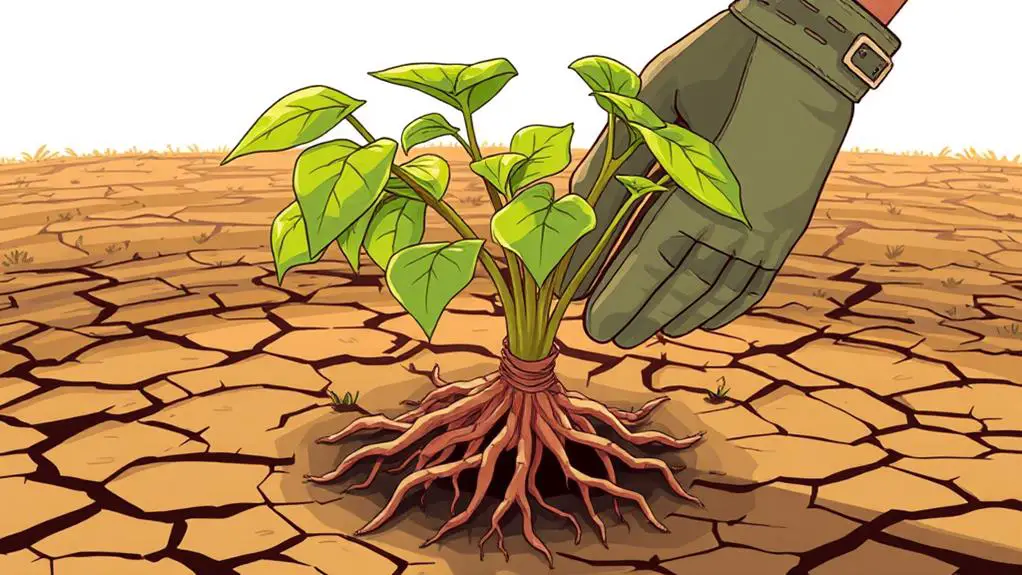
Understanding what causes transplant shock can help you prevent it.
Root disturbance is a big factor, as it reduces the plant's ability to take in water and nutrients.
Environmental changes, like differences in soil, moisture, and light, add extra stress to the plant, making it harder for it to adjust.
Root Disturbance Impact
Root disturbance is a primary cause of transplant shock, severely affecting a plant's ability to absorb essential water and nutrients. When you move a plant, its root system can get disrupted, leading to significant stress. This is especially true for newly planted specimens.
Let's explore why root disturbance impacts plants so much:
- Excavation Damage: During the digging process, roots can get cut or damaged, limiting the plant's ability to take in water and nutrients.
- Root-Bound Issues: Containerized plants often have roots growing in circles within the pot, causing stress when they're moved to the ground.
- Root Loss: Balled and burlapped trees can lose a lot of their root system when dug up, making them more prone to transplant shock.
- Young Plants: Younger plants have smaller, less developed roots, making them more vulnerable to the stress caused by transplantation.
Addressing root disturbance is vital for minimizing transplant shock. When transplanting, be as gentle as possible with the roots.
For containerized plants, gently untangle the roots before planting them in the ground. For balled and burlapped trees, try to preserve as much of the root ball as possible.
Environmental Change Stress
A significant cause of transplant shock is the environmental change stress plants face when moved to a new location. When you relocate a plant, it encounters new sunlight exposure, temperature, and humidity, which can be quite stressful. This sudden shift from a controlled nursery to possibly harsher outdoor conditions can hinder a plant's ability to adapt and flourish.
Differences in soil composition and drainage between the original and new planting sites also play a major role in transplant shock. If the soil moisture levels and nutrient availability change abruptly, the plant may struggle to uptake water and nutrients effectively. Wind exposure can further exacerbate the problem by causing additional stress.
Timing is vital when it comes to reducing environmental stress. Spring and fall are typically the best seasons for transplanting because temperature and moisture levels are more stable, making it easier for the plant to adjust.
Here's a quick comparison of factors that contribute to environmental change stress:
| Factor | Controlled Environment | New Location |
|---|---|---|
| Sunlight Exposure | Consistent | Variable |
| Soil Moisture | Regulated | Fluctuating |
| Wind Exposure | Minimal | Potentially Higher |
Preparing for Transplant
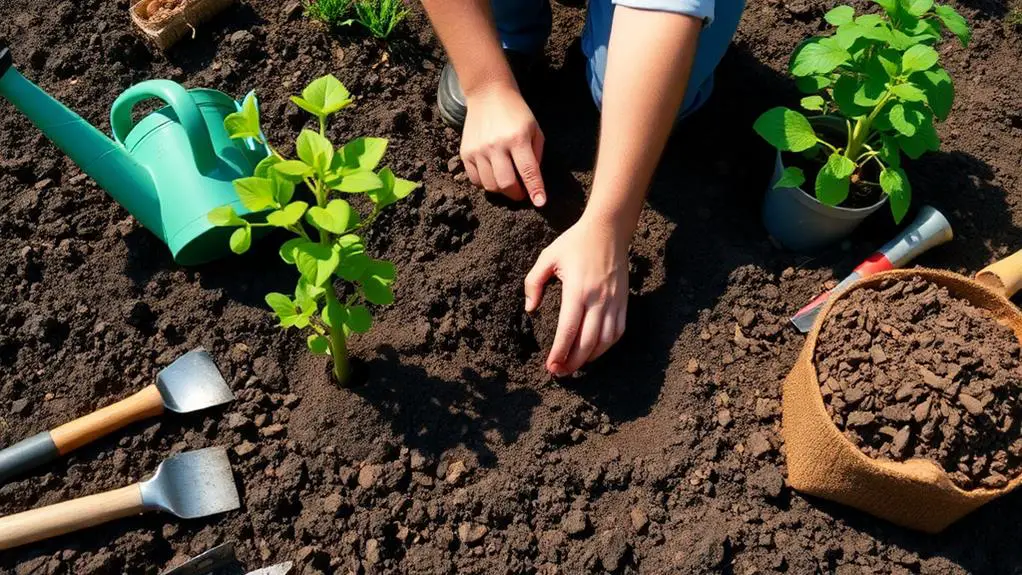
When gearing up for a successful transplant, timing is essential. Spring and fall are the ideal seasons because mild temperatures help reduce stress on the plant and encourage better rooting.
Before you start, make certain the soil is well-watered a few hours in advance. This keeps the roots hydrated and less prone to damage during the move.
Here are some key steps to prepare for the transplant:
- Prepare the new site: Loosen the soil and mix in organic matter to match the plant's specific needs for drainage and sunlight.
- Prune the roots: Trim any damaged or dead roots to stimulate new growth and improve the plant's chances of recovery.
- Gather your tools: Confirm you have a spade, gloves, a watering can, and mulch ready for the transplant.
- Check the weather: Avoid transplanting on extremely hot or cold days to minimize stress on the plant.
Pay close attention to the soil condition. Healthy, loose soil will make it easier for the roots to establish themselves in their new home.
Techniques for Transplanting
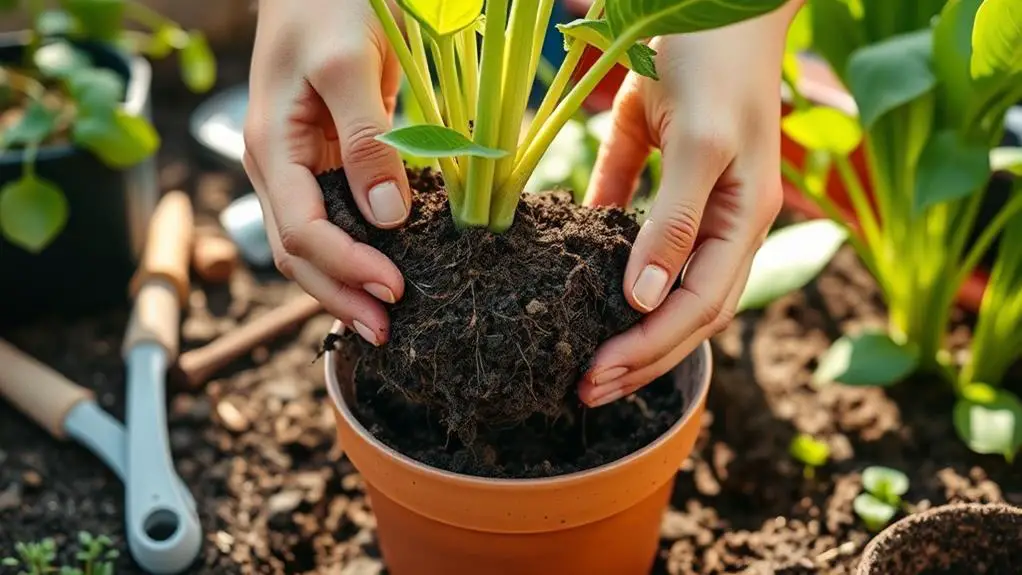
To guarantee a successful transplant, you should handle the root system with care and precision. Start by using a fork instead of a spade to dig around the root system. This helps minimize root cutting and preserves as many roots as possible, reducing the risk of transplant shock.
Dig a hole that's wide and deep enough to fit the entire root ball comfortably. Make certain the plant is placed at the same depth it was previously growing.
After placing the plant in its new home, thoroughly water it to settle the soil around the roots. Keep an eye on soil moisture, adjusting watering based on rainfall and soil conditions.
Applying organic mulch around the base of the plant can help the soil retain moisture, regulate temperature, and suppress weeds. Be careful not to let the mulch touch the plant's trunk.
For newly transplanted trees, support them with stakes for the first two years. This prevents wind rock and guarantees the roots remain stable, promoting healthy growth.
Immediate Post-Transplant Care

Kicking off immediate post-transplant care, you'll need to water the plant thoroughly right after moving it to its new spot. This helps settle the soil around the roots and guarantees proper moisture retention.
Be careful to avoid watering directly on the trunk or stalk to prevent rot.
Next, monitor the soil moisture levels closely for the first few weeks. You can do this by inserting your finger an inch deep into the soil to check if it's damp. If the soil feels dry, water the plant weekly, especially if there's no rain.
Applying a layer of organic mulch around the base of the plant is another vital step. Mulch helps retain soil moisture, regulates temperature, and suppresses weed growth.
However, keep the mulch away from the trunk to avoid rotting.
Here are some post-transplant care tips to follow:
- Shade or wind protection: Provide shade or wind barriers to minimize stress during hot or windy conditions.
- Regular inspections: Check for pests or diseases frequently to catch any issues early.
- Consistent watering: Maintain consistent soil moisture, especially in the first few weeks.
- Proper mulching: Use organic mulch but keep it away from the trunk.
Long-Term Care Strategies
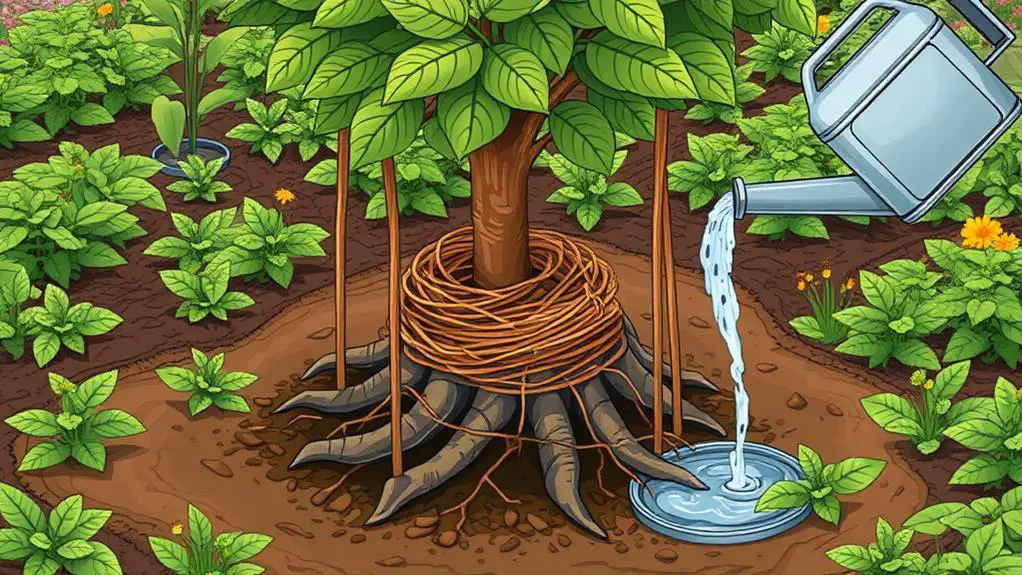
Establishing long-term care strategies is essential to guarantee your transplanted plant thrives well beyond its initial phase. Start by setting up a consistent watering schedule. Your newly transplanted tree needs adequate moisture weekly, especially during its first growing season when it's most vulnerable to transplant shock.
Regular watering helps maintain soil moisture, which is vital for root establishment.
To further support your plant, apply organic mulch around its base. Mulch retains soil moisture, regulates temperature, and suppresses weeds. This allows the tree to focus its energy on root establishment rather than competing for resources.
Monitor the soil's moisture levels regularly. You can use the finger test by checking for dryness an inch below the surface.
Adjust your watering practices accordingly to avoid drought stress and overwatering, both of which can harm your plant.
Gradually acclimate your plant to its new light conditions. Providing shade or protection from harsh sunlight can prevent additional stress.
Prevention Tips
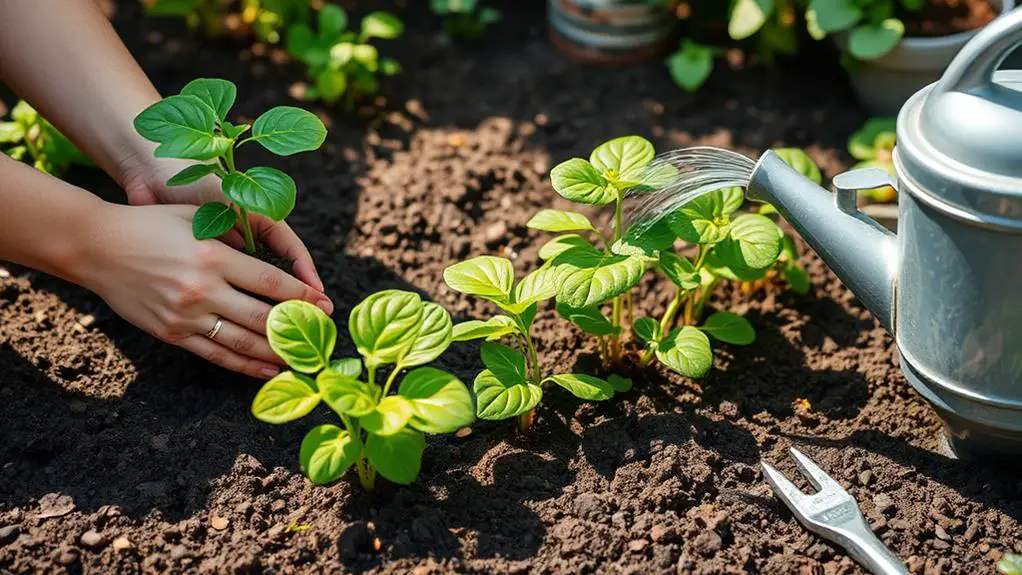
One of the best ways to combat transplant shock is by taking preventative measures before moving your tree. Transplant shock can be tough on trees, but with a little preparation, you can minimize its effects.
First, make sure to transplant during ideal seasons. Fall or early spring are perfect times because the weather is mild, which helps reduce stress and aids in recovery.
Second, water the soil thoroughly a few hours before you start the transplanting process. This helps keep the root ball intact and minimizes root damage.
Next, preparing the new planting site is essential. Loosen the soil and mix in organic matter to match the tree's environmental needs, making it easier for the tree to adapt.
Also, think carefully about the initial planting location. Choose a spot that fits the tree's mature height and environmental requirements to avoid unnecessary moves later.
Here are some key tips to remember:
- Transplant during fall or early spring.
- Water the soil well before moving.
- Prepare the new site with loose soil and organic matter.
- Select the right initial planting location.
Resources and Support
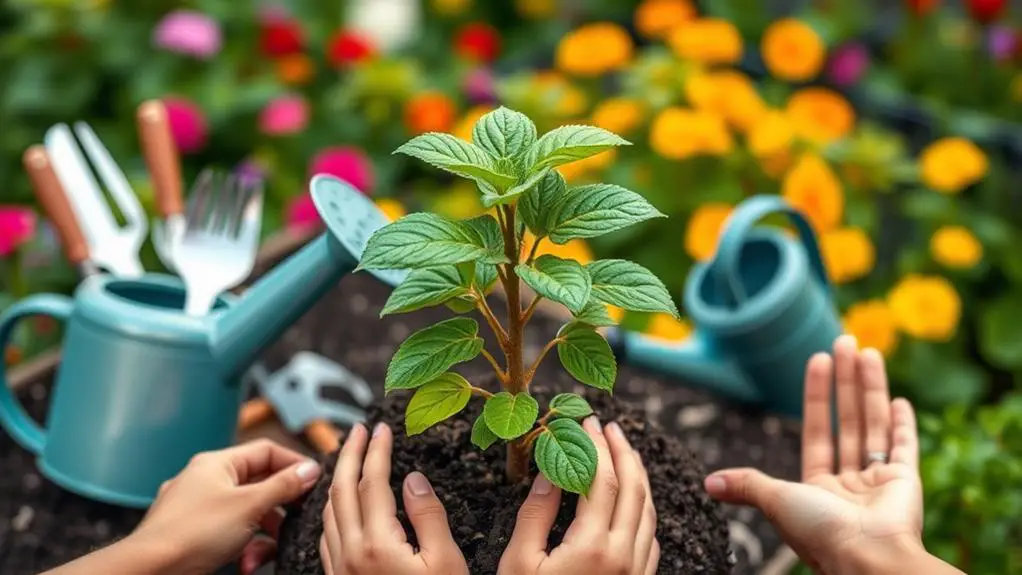
In addition to preventative measures, having access to reliable resources and support can make all the difference when dealing with transplant shock. TreesCharlotte offers a wealth of educational resources focused on tree care, including thorough guides on transplant shock and how to help trees recover. These resources are essential for anyone looking to improve their understanding of tree care and guarantee their trees thrive.
Community programs through TreesCharlotte also promote urban forestry and the benefits of planting and caring for trees in local environments. By participating in these programs, you can learn valuable tips and techniques for managing transplant shock and contribute to a greener community.
If you're passionate about tree care, consider joining volunteer training opportunities provided by TreesCharlotte. As a trained tree steward, you can support your community by sharing knowledge and helping others care for their trees.
For specific questions about tree health and care, don't hesitate to reach out directly to TreesCharlotte. Their experts are ready to offer advice and support tailored to your needs.
Lastly, sign up for the TreesCharlotte newsletter to receive ongoing tips, updates, and resources. This guarantees you stay informed about the best practices for managing transplant shock effectively.
Frequently Asked Questions
Can Transplant Shock Affect Indoor Plants?
Yes, transplant shock can affect indoor plants. You'll notice wilting, yellowing leaves, or slowed growth. It's essential to handle plants gently, provide adequate water, and create a stable environment to help them recover quickly.
How Long Does Transplant Shock Typically Last?
Transplant shock typically lasts anywhere from a few days to a couple of weeks. You should keep an eye on your plant's health and provide proper care to help it recover faster during this adjustment period.
Are Certain Plant Species More Prone to Transplant Shock?
Yes, certain plants are more prone to transplant shock. For example, woody plants and perennials can be more sensitive. You'll need to take extra care when transplanting these species to guarantee they establish well in their new location.
What Signs Indicate a Plant Is Overcoming Transplant Shock?
You'll notice new leaf growth and a stronger, more vibrant color in the foliage. The plant's overall vigor improves, and it starts to flourish in its new environment, showing resilience and adaptation to the transplant.
Can I Use Commercial Anti-Shock Products for Plants?
Yes, you can use commercial anti-shock products for plants. They're designed to reduce stress and promote recovery. Just follow the instructions on the label to guarantee you're giving your plants the best chance to thrive.
Conclusion
You've got this! Dealing with transplant shock might seem tough, but by following these steps, you're giving your plants the best chance to thrive. Remember to prepare the new site well, keep an eye on symptoms, and provide proper care. With patience and attention, your plants will recover and grow strong. Don't forget to use mulch and protect them from harsh conditions. Happy gardening, and trust your instincts—your plants are in good hands!


